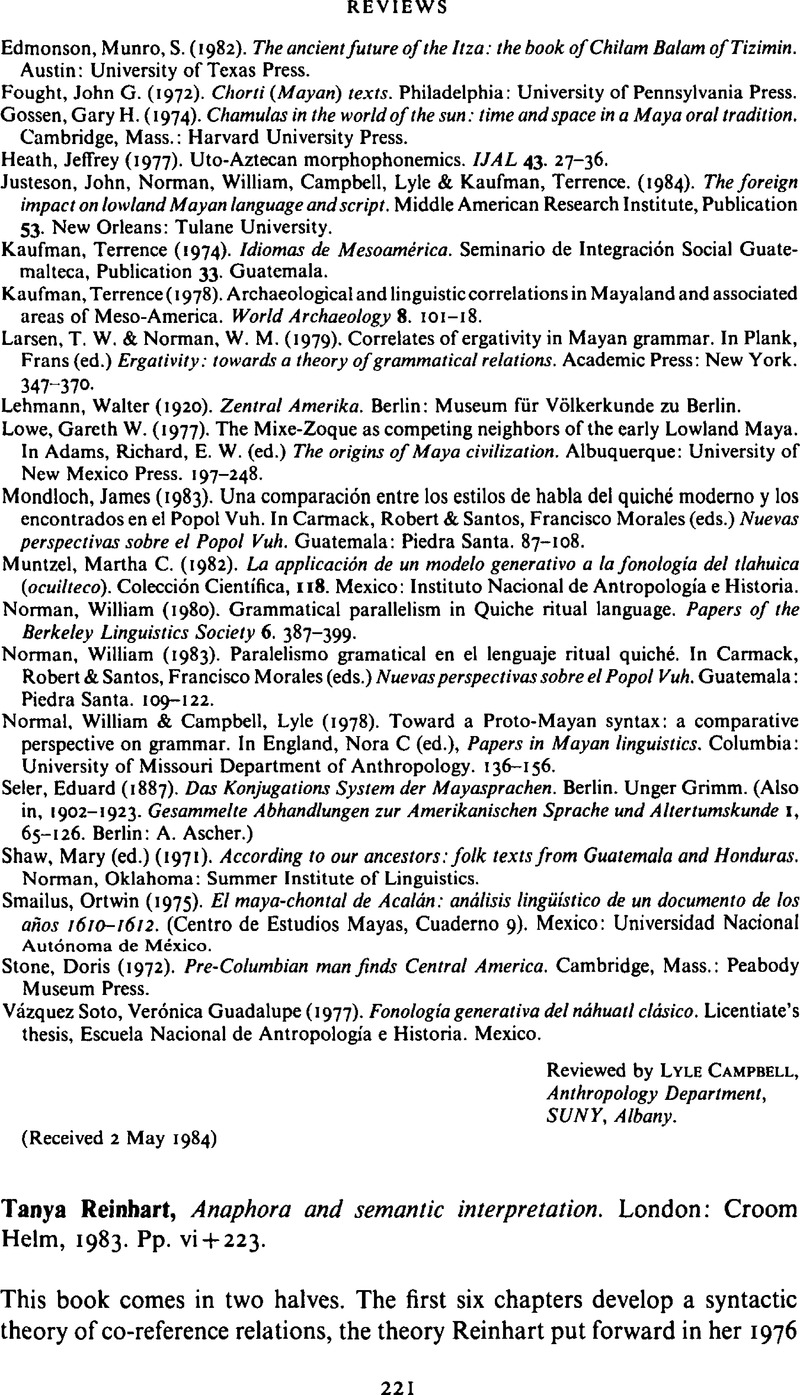No CrossRef data available.
Article contents
Tanya Reinhart, Anaphora and semantic interpretation. London: Croom Helm, 1983. Pp. vi + 223.
Published online by Cambridge University Press: 28 November 2008
Abstract
An abstract is not available for this content so a preview has been provided. Please use the Get access link above for information on how to access this content.

- Type
- Reviews
- Information
- Copyright
- Copyright © Cambridge University Press 1985
References
REFERENCES
Bach, E. & Partee, B. H. (1980). Anaphora and semantic structure. In Kreiman & Oteda (eds.), 1–28.Google Scholar
Cooper, R. (1979). The interpretation of pronouns. In Heny, F. & Schnelle, H. (eds.), Syntax and Semantics 10. New York: Academic Press. 61–72.Google Scholar
Dowty, D. R. (1980). Comments on the paper by Bach and Partee. In Kreiman & Oteda (eds.), 29–40.Google Scholar
Kempson, R. (1983). Definite NPs and context-dependence: a unified theory of anaphora. Unpublished manuscript, S.O.A.S.Google Scholar
Kreiman, K. J. & Oteda, A. E. (eds.) (1980). Papers from the Parasession on Pronouns and Anaphora. Chicago: Chicago Linguistics SocietyGoogle Scholar
Reinhart, T. (1983). Coreference and bound anaphora: a restatement of the anaphora questions. Linguistics and Philosophy 6.1. 47–88.CrossRefGoogle Scholar




